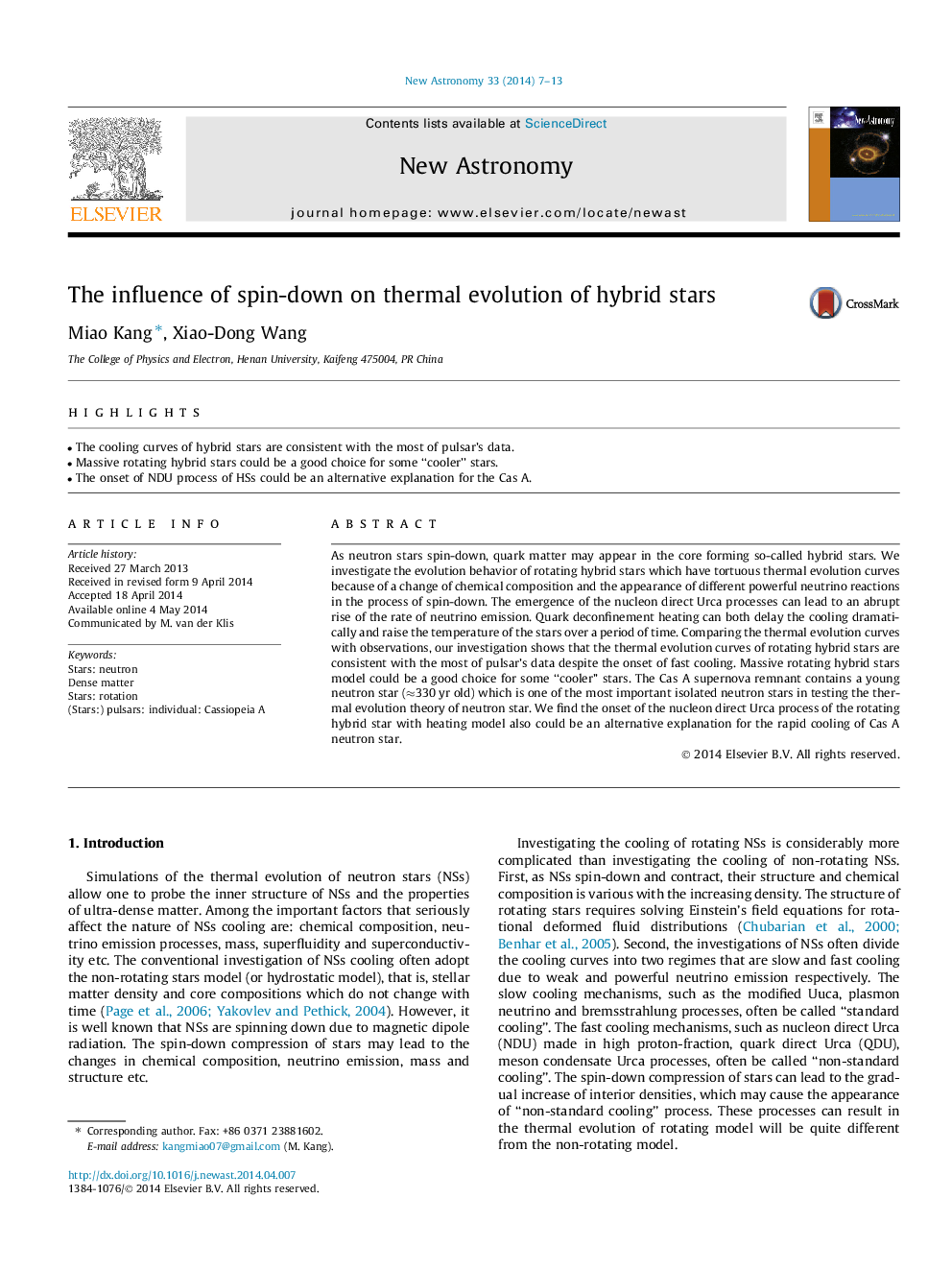| Article ID | Journal | Published Year | Pages | File Type |
|---|---|---|---|---|
| 1778864 | New Astronomy | 2014 | 7 Pages |
•The cooling curves of hybrid stars are consistent with the most of pulsar’s data.•Massive rotating hybrid stars could be a good choice for some “cooler” stars.•The onset of NDU process of HSs could be an alternative explanation for the Cas A.
As neutron stars spin-down, quark matter may appear in the core forming so-called hybrid stars. We investigate the evolution behavior of rotating hybrid stars which have tortuous thermal evolution curves because of a change of chemical composition and the appearance of different powerful neutrino reactions in the process of spin-down. The emergence of the nucleon direct Urca processes can lead to an abrupt rise of the rate of neutrino emission. Quark deconfinement heating can both delay the cooling dramatically and raise the temperature of the stars over a period of time. Comparing the thermal evolution curves with observations, our investigation shows that the thermal evolution curves of rotating hybrid stars are consistent with the most of pulsar’s data despite the onset of fast cooling. Massive rotating hybrid stars model could be a good choice for some “cooler” stars. The Cas A supernova remnant contains a young neutron star (≈≈330 yr old) which is one of the most important isolated neutron stars in testing the thermal evolution theory of neutron star. We find the onset of the nucleon direct Urca process of the rotating hybrid star with heating model also could be an alternative explanation for the rapid cooling of Cas A neutron star.
